Wind & Energy-saving Technologies
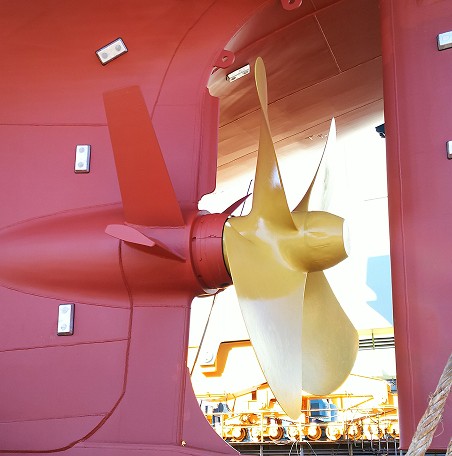
Pre-Swirl Fins
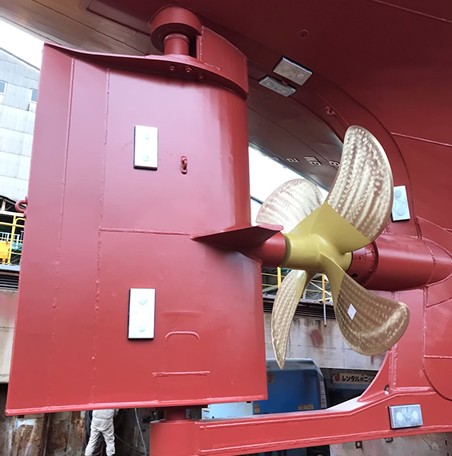
Energy Saving Rudder-Bulb with fins

Wake Equalizing Duct
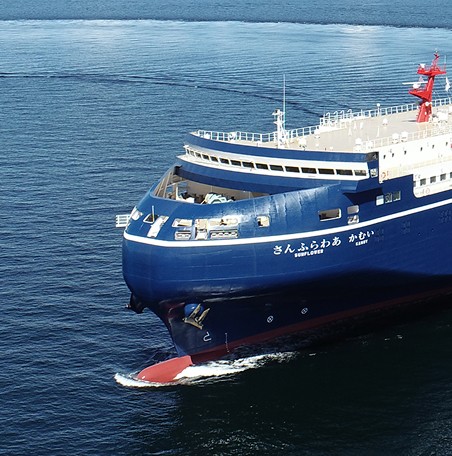
Aerodynamically Optimized Hull Design

Bow Wind-Shield for container ship
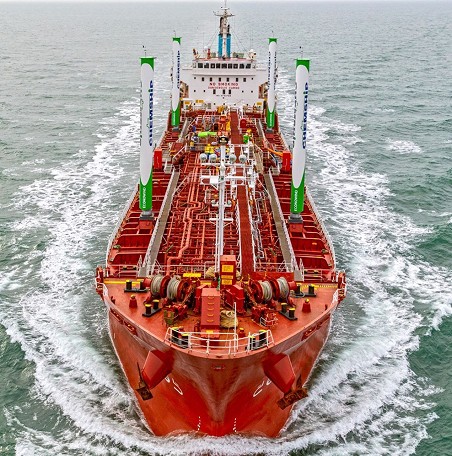
Suction Wing
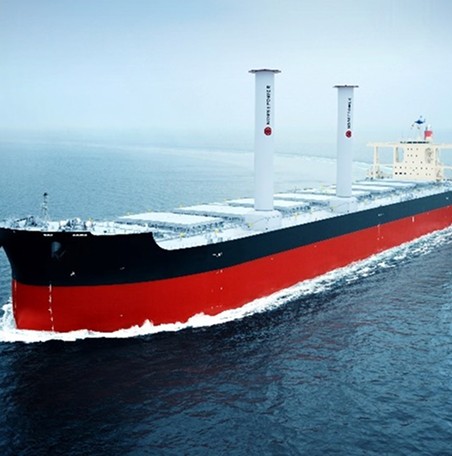
Rotor Sail
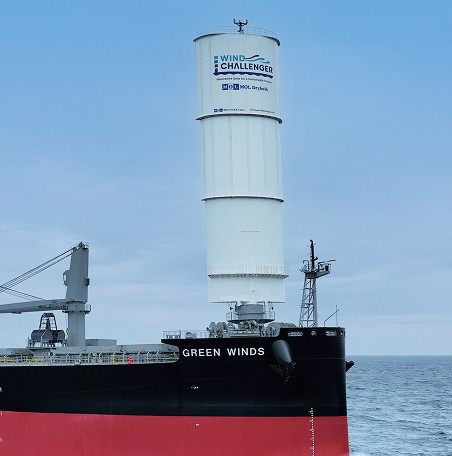
Hard Sail

Wind & Energy-saving
Technologies
Technologies
Building on the strength of the PBCF, the cornerstone of our business and a continuously enhanced energy-saving device, we are integrating wind-based solutions to further our commitment to reducing ship fuel consumption and CO2 emissions.

Wind & Energy-saving
Technologies
Technologies
Building on the strength of the PBCF, the cornerstone of our business and a continuously enhanced energy-saving device, we are integrating wind-based solutions to further our commitment to reducing ship fuel consumption and CO2 emissions.
WIND CHALLENGER
Mitsui O.S.K.Lines, Ltd.
Mitsui O.S.K.Lines, Ltd.
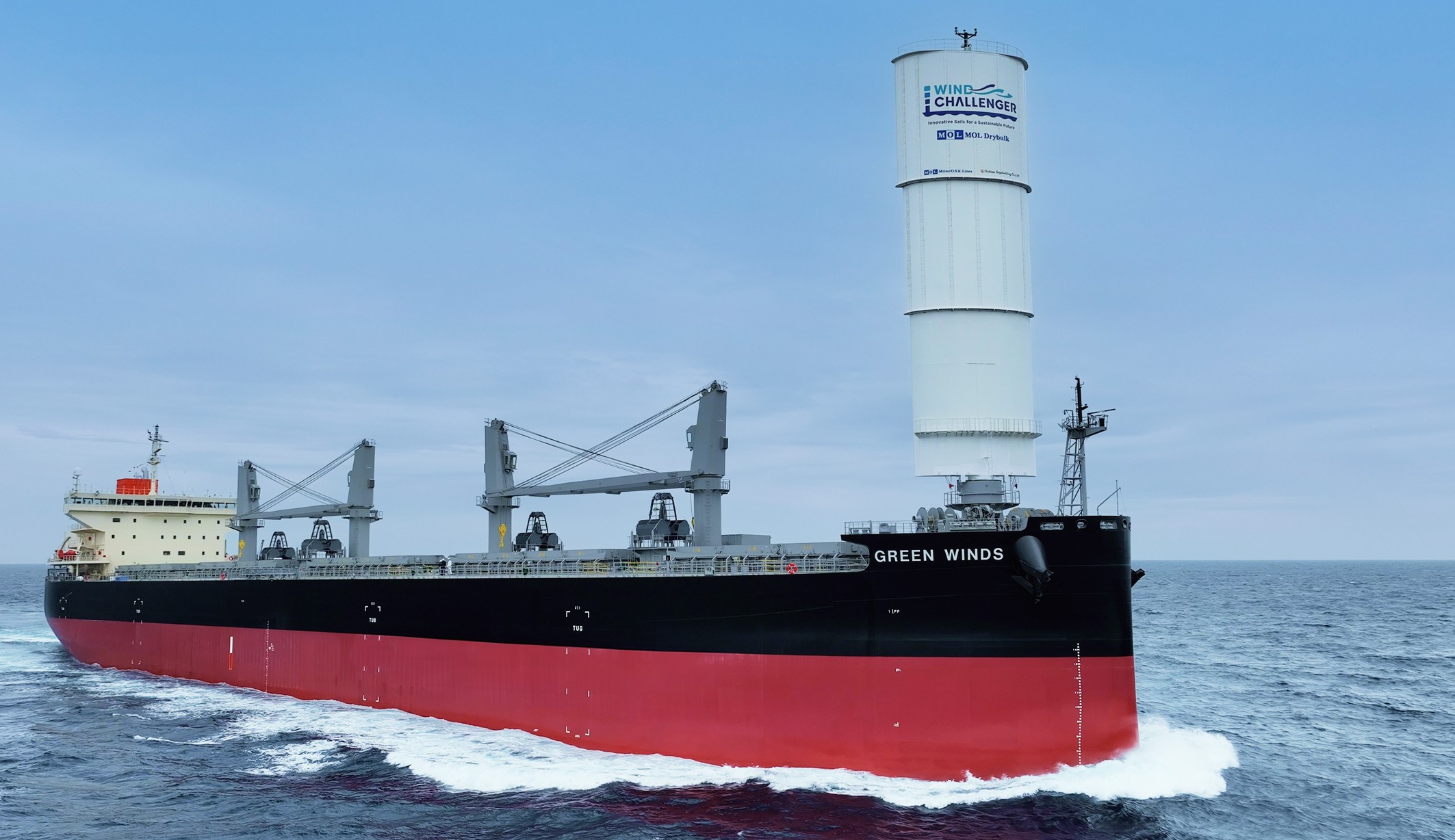
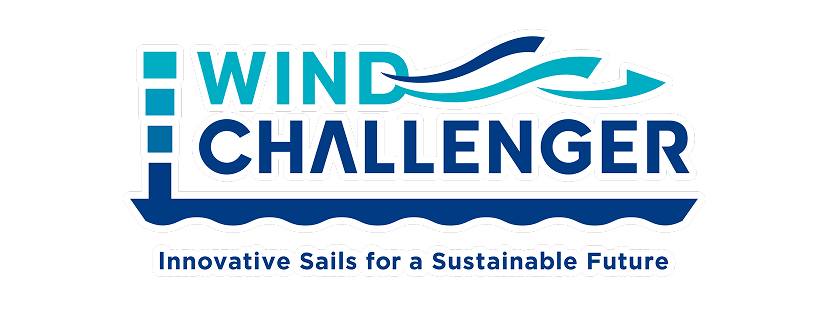
The Wind Challenger utilizes sails to harness wind power, a renewable energy source, for ship propulsion. Currently, large commercial vessels rely almost entirely on fossil fuels for propulsion. However, by installing sails, wind power can be directly added as a propulsion force, reducing fossil fuel consumption without altering speed. This installation, essentially maximizing and effectively utilizing the technology of traditional sailing ships with modern advancements, aims to reduce fuel consumption and significantly cut GHG emissions for large cargo ships.
Rotor Sail
Norsepower Oy Ltd
Norsepower Oy Ltd
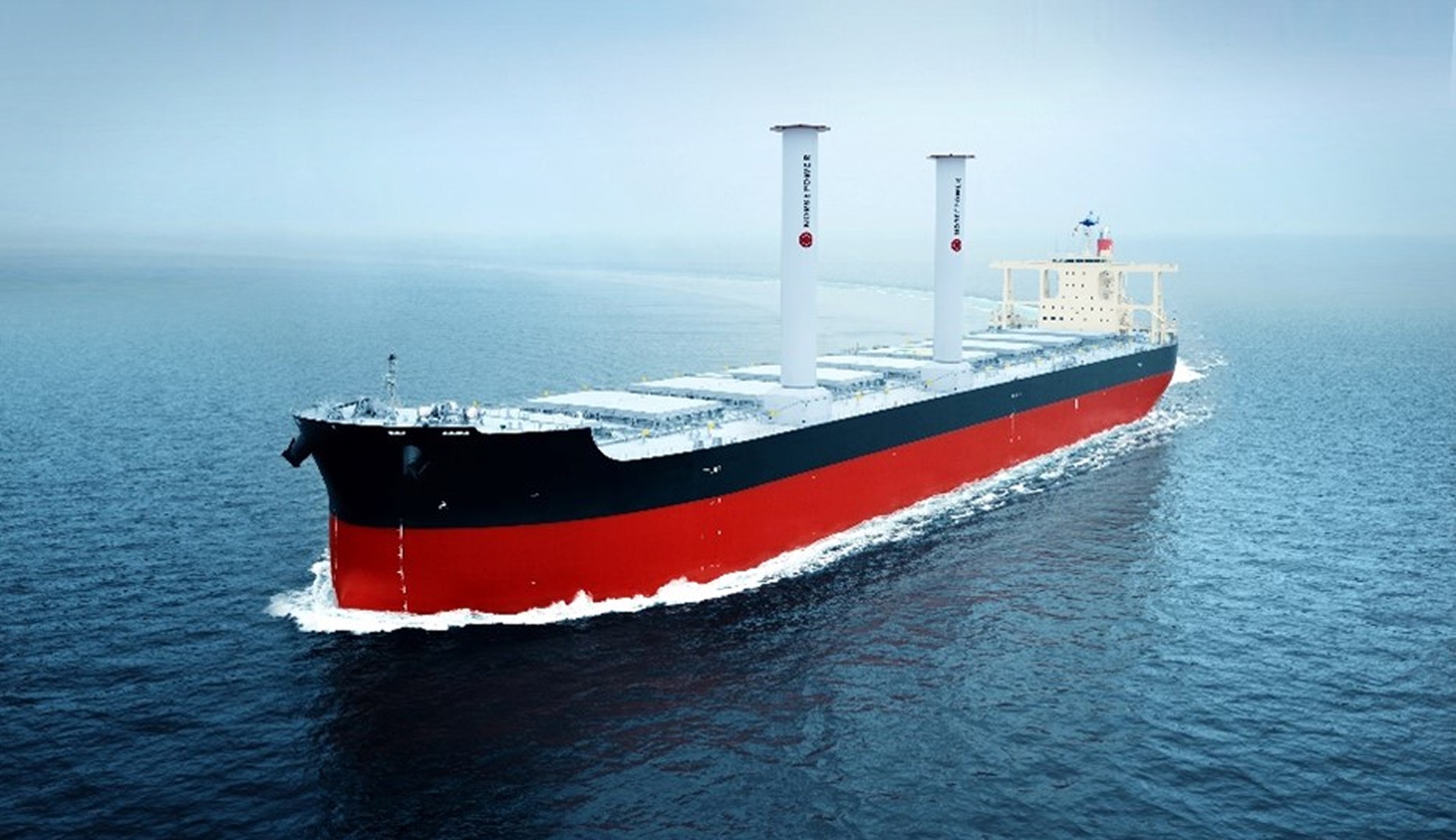

The rotor sail is a "cylindrical sail" that mounts a cylindrical rotor on the deck of a ship. By rotating the outer cylinder in response to wind conditions, it creates a pressure differential that generates thrust through the Magnus effect (*1). Due to its cylindrical shape, it has the advantage of converting wind from a wide range of directions into propulsion. Norsepower, a leading company in the design and manufacturing of rotor sails, offers five size options (18m, 24m, 28m, 30m, and 35m in height) to provide the optimal size according to the ship's size and type. Since its installation on a RoRo vessel in 2014, it has been adopted on a wide range of ships, including tankers, ferries, and bulk carriers, with its effectiveness already demonstrated.
*1 Magnus Effect: When wind passes over the outer cylinder of a rotor sail, rotating the cylinder accelerates the airflow on one side while decelerating it on the opposite side. This change in airflow speed creates a pressure differential, generating thrust perpendicular to the direction of the wind flow.
VentoFoil
Econowind B.V.
Econowind B.V.
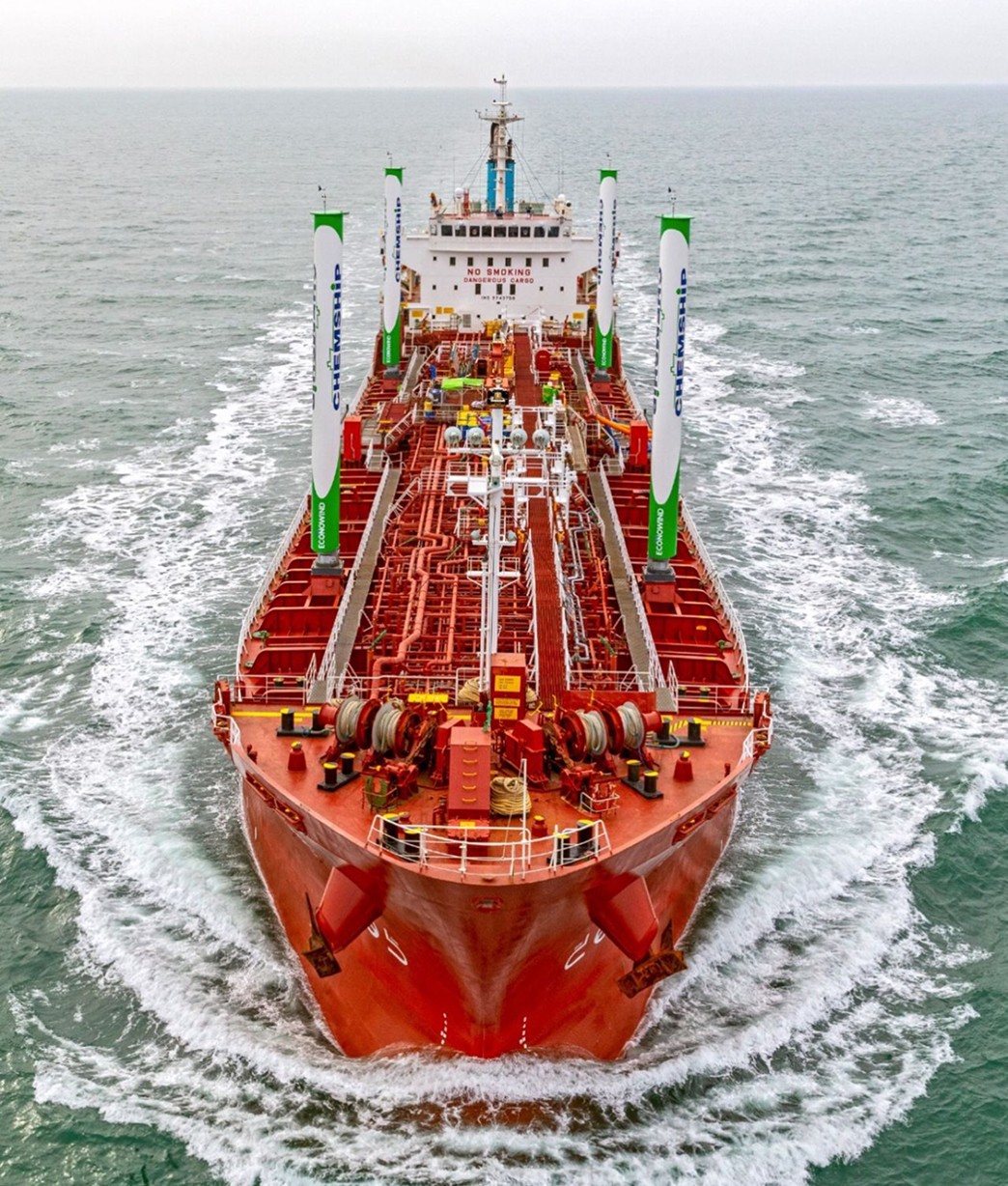
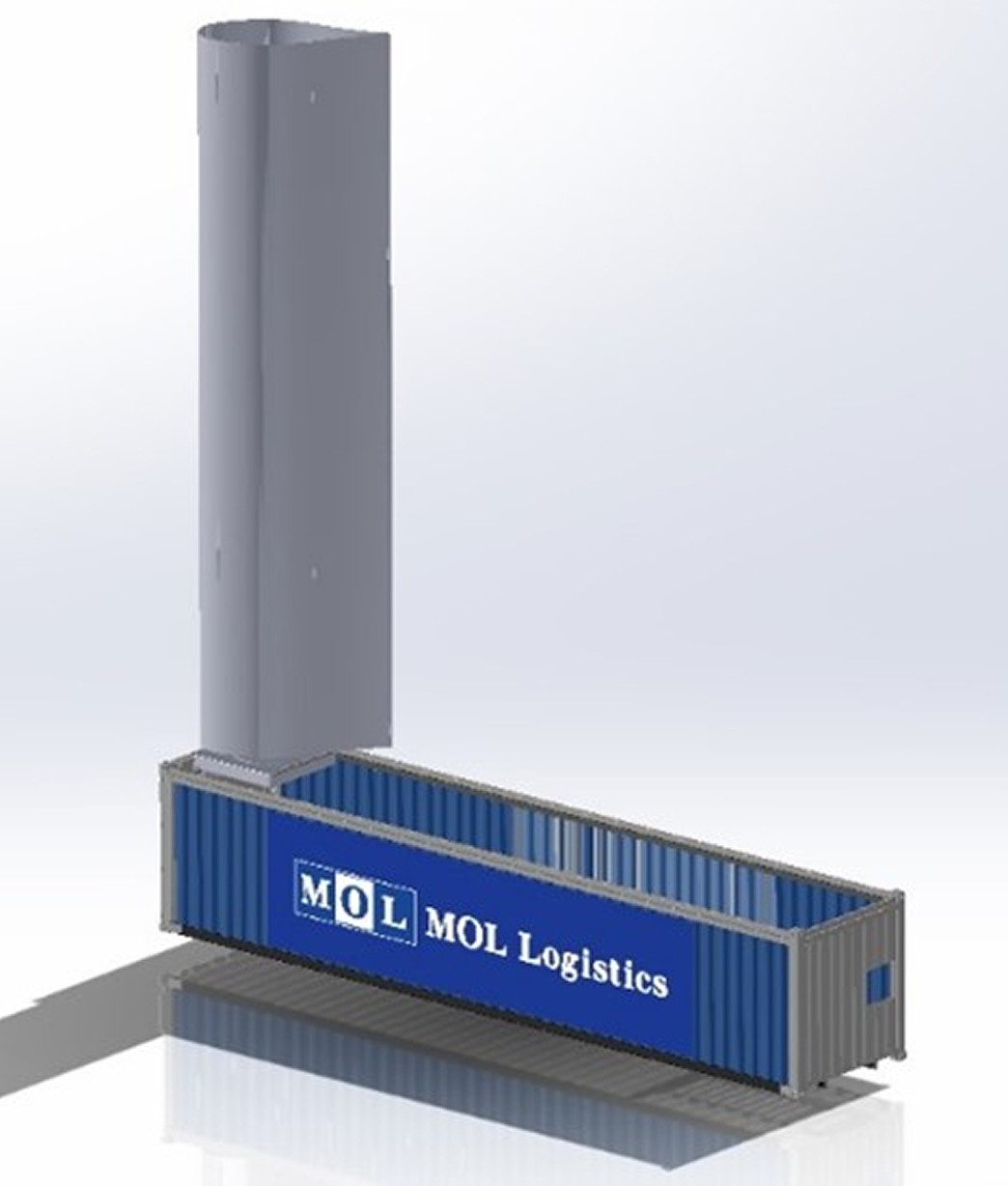

VentoFoil is a maritime wing that utilizes the principles of an airplane wing. In addition to generating lift through its wing shape, it obtains thrust by performing boundary layer suction (*2). It automatically adjusts its angle according to wind direction and the ship's course and can be folded to prevent damage to the wing. Econowind's VentoFoil comes in two detachable types: a container-stored model and a flatrack model, in addition to the ship-mounted version. Made from aluminum alloy, it is relatively lightweight and more affordable compared to other wind-assisted propulsion devices. It is being adopted across a wide range of vessels, including cement ships, container ships, bulk carriers, and tankers. Major Japanese shipping companies such as the MOL Group, Nippon Yusen Kabushiki Kaisha, and Ocean Network Express Pte. Ltd. have decided to implement this technology.
*2 Boundary Layer Suction: This technique increases lift by using internal ventilators to draw air over the surface of the wing.
Bow Wind-Shield
MOL Techno-Trade, Ltd.
MOL Techno-Trade, Ltd.

By installing a bow wind shield on a container ship in operation, wind resistance is reduced, leading to a decrease in CO2 emissions.
Aerodynamically Optimized Hull Design ISHIN
MOL Techno-Trade, Ltd.
MOL Techno-Trade, Ltd.
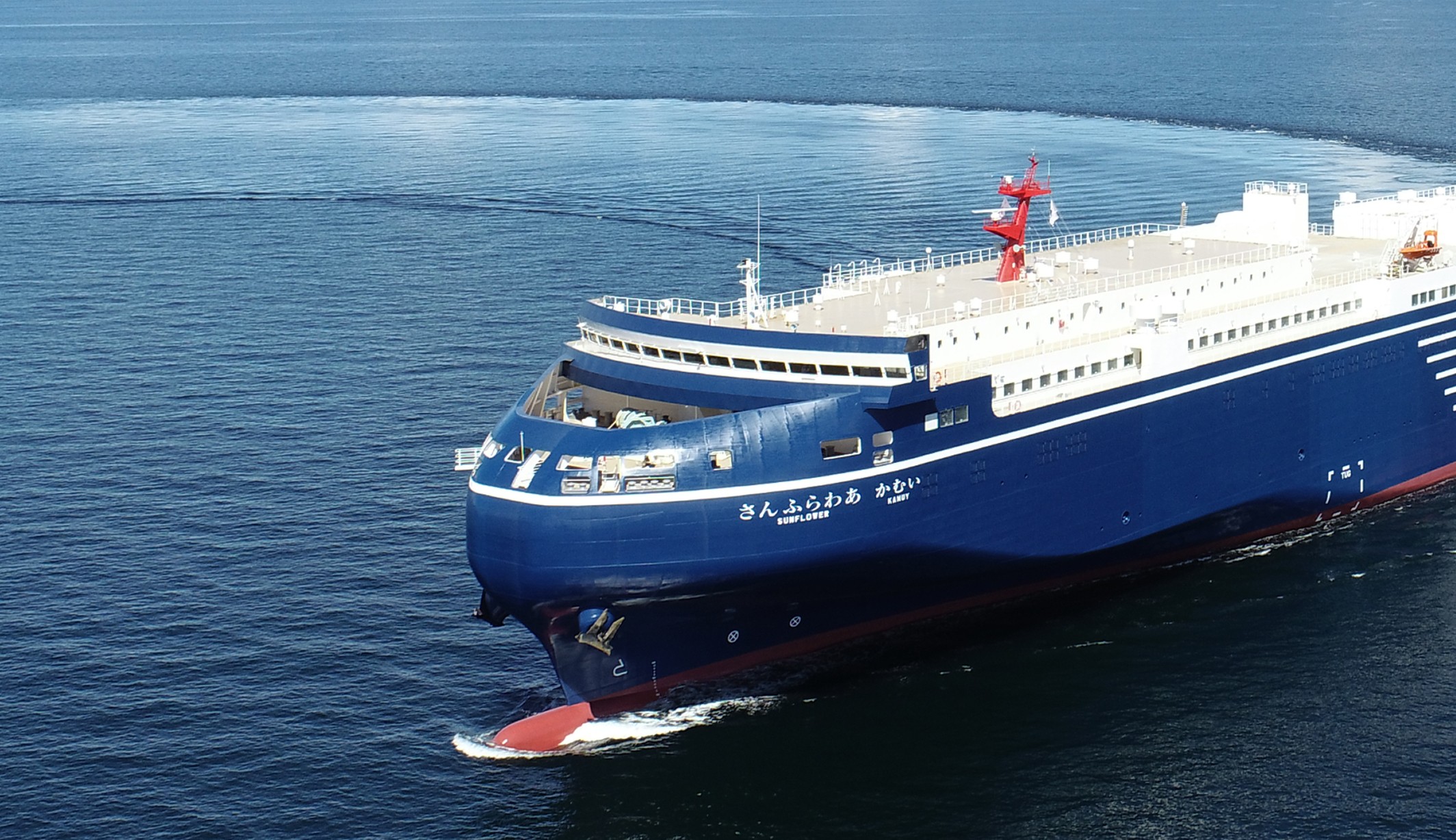
Designed to reduce wind pressure from the bow and sides, this ship shape smooths the flow of wind and utilizes the lift generated from diagonal headwinds as propulsion. It leverages the characteristics of high-speed ferries.
Wake Equalizing Duct(WED Wake Equalizing Duct)
Schneekluth Hydrodynamik Entwicklungs- und Vertriebsges. mbH
Schneekluth Hydrodynamik Entwicklungs- und Vertriebsges. mbH
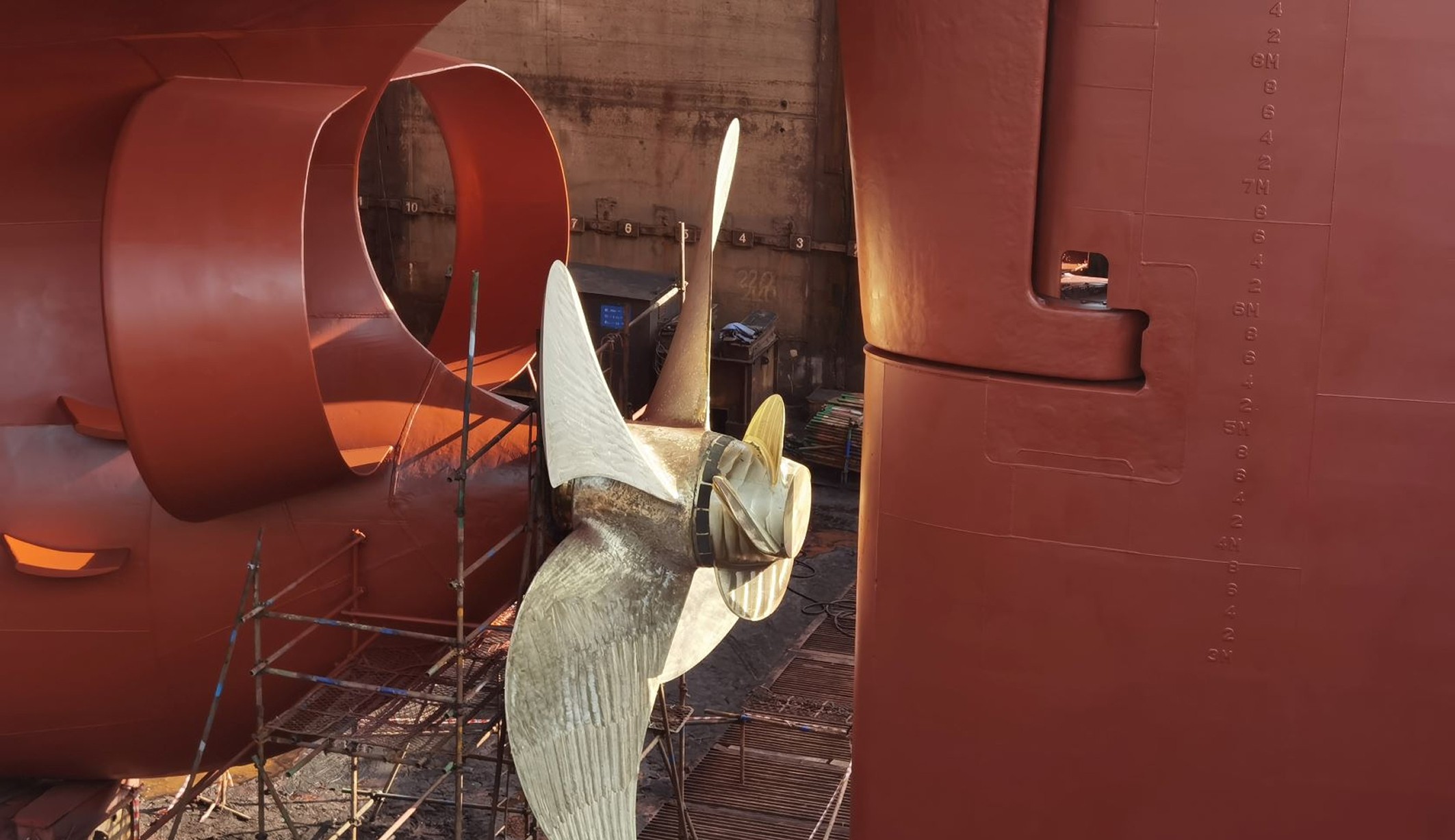

By installing a duct upstream of a propeller, lift is generated through the suction effect during propeller rotation. Additionally, it rectifies the flow into the propeller, which enhances the propeller’s propulsion efficiency.
Energy Saving Rudder-Bulb with fins
MOL Techno-Trade, Ltd.
MOL Techno-Trade, Ltd.
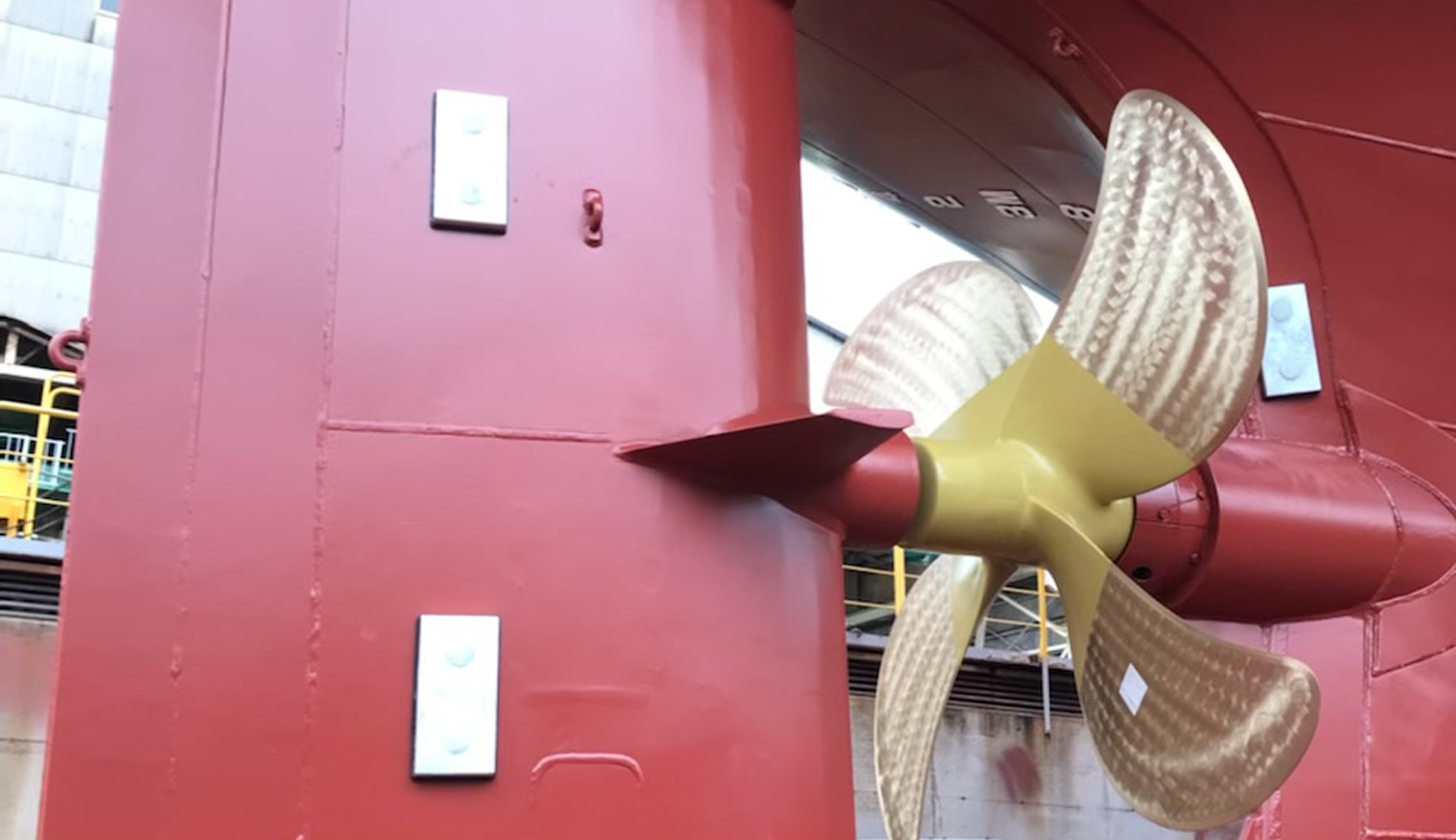
Mitsui O.S.K. Lines, Japan Hamworthy, Akishima Laboratory, and MOL Techno-Trade have jointly conducted research and development on Rudder-Bulb with fins, confirming its energy-saving effect exceeding 5%. A patent has also been granted. The Rudder-Bulb with fins enhances the energy-saving efficiency (improved horsepower) by utilizing the steering effectiveness of rudders like the Schilling rudder, along with reactions and the unique bulb.
Pre-Swirl Fins
Fluid Techno Co., Ltd.
Fluid Techno Co., Ltd.
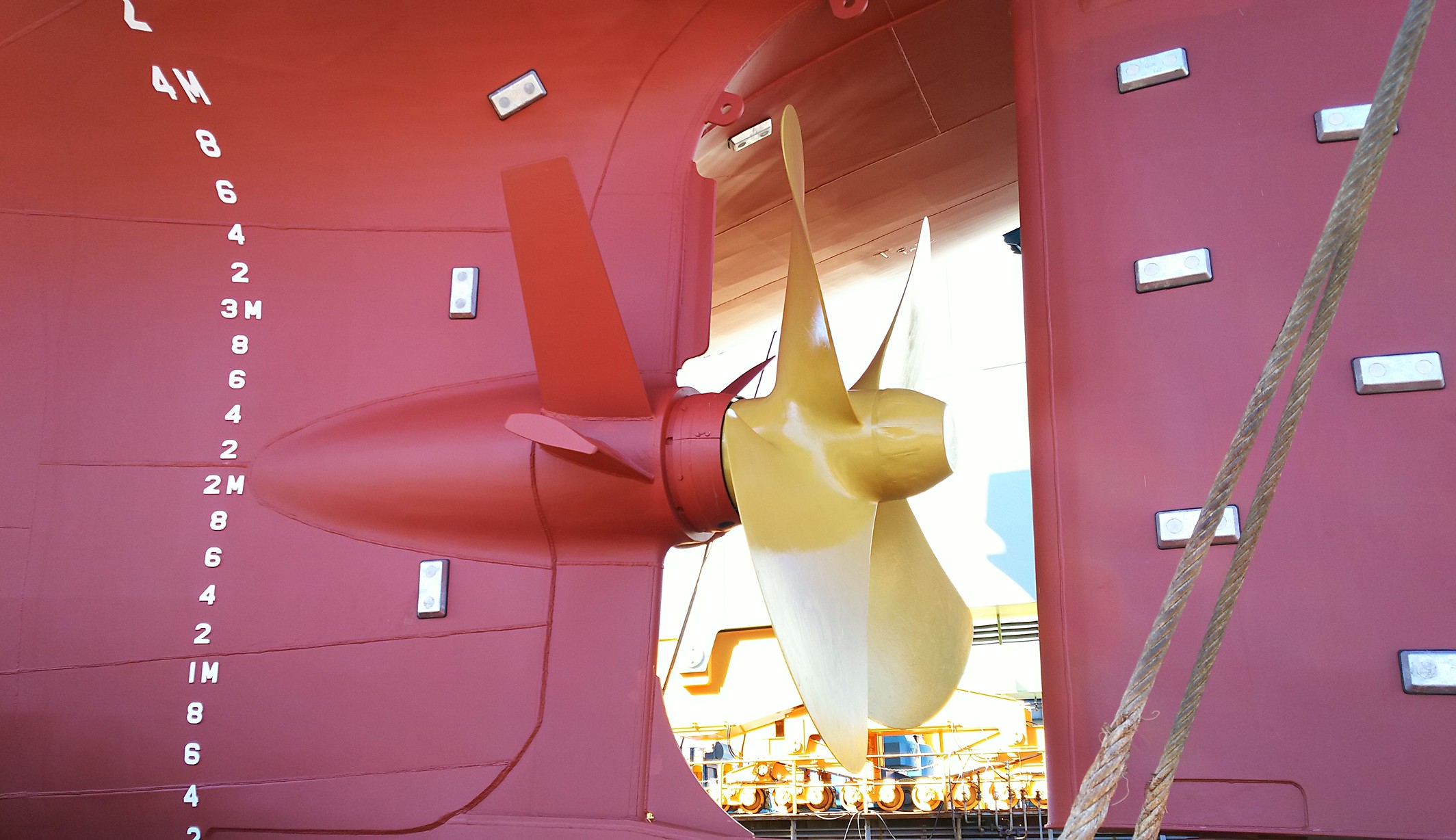
This device involves 4 to 5 stator fins (plate-like structures similar to airplane wings) installed radially on the stern boss above the propeller shaft. It rectifies the flow into the propeller, allowing the propeller to generate greater thrust with minimal main engine output.
